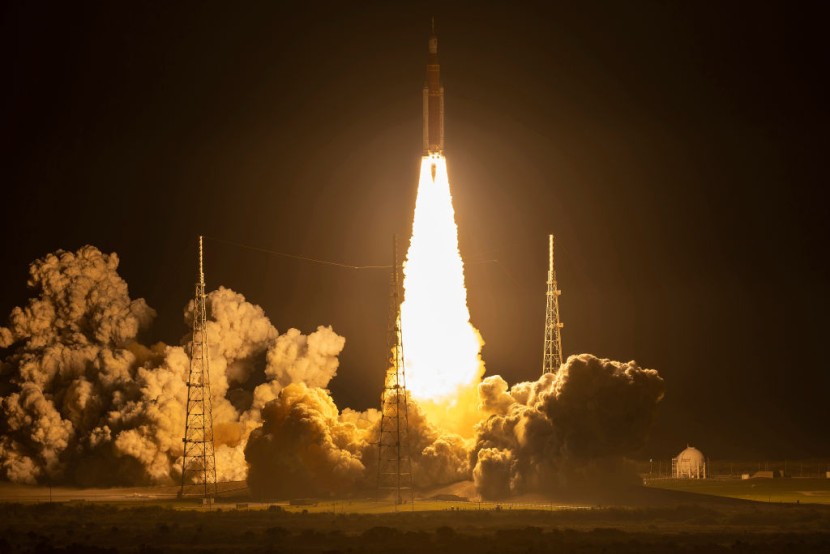
NASA's Orion spacecraft enters the moon's orbit on Friday, marking a new milestone for the space agency's Artemis I mission as the capsule captures stunning new images of the lunar surface and its craters.
The space capsule had been making its way to our planet's nearest cosmic neighbor since the launch of the Artemis rocket on Nov. 16. Orion performed an 88-second engine burn on Friday at around 4:52 p.m. that successfully got the spacecraft into a distant retrograde orbit around the moon as scientists planned.
Orbit Around the Moon
In an update shortly after the end of the engine burn, NASA officials said that Orion, prior to conducting the burn, was traveling more than 92,000 kilometers above the surface of the moon. It marked the farthest distance that the capsule will reach from the moon during the Artemis I mission.
NASA officials added that while the capsule was in lunar orbit, flight controllers will continue to monitor key systems and perform routine checkouts while in the environment of deep space. The DRO takes the Orion spacecraft roughly 64,000 kilometers beyond the moon at its most distant point, as per Space.
As the capsule travels along its projected path, it will set a new record for getting farther from Earth than any previous human-rated spacecraft. Currently, that record is held by NASA's Apollo 13 mission at 400,171 kilometers and came as the craft was not designed to travel that far. Apollo 13 also looped around the moon instead of landing on the lunar surface after an oxygen tank in the craft's service module failed in deep space.
The Orion spacecraft is set to break Apollo 13's record on Saturday morning, Nov. 26, said officials from NASA. However, the capsule will continue putting our planet in its rear-view mirror for the next two days and will reach a maximum distance of 438,570 kilometers on Monday, Nov. 28.
According to Fox News, the newly-captured images were taken by Orion's Optical Navigation Camera during the capsule's sixth mission day. The photographs, which were in black and white, provide highlights into billions of years of history.
NASA's Artemis I Mission
In a caption alongside the photos, NASA said that the spacecraft uses the optical navigation camera to capture images of our planet and its satellite at different phases and distances. They provide an enhanced body of data to certify the camera's effectiveness under different lighting conditions.
Furthermore, scientists also learned about the conditions of our early solar system thanks to the analysis of the composition, size, and distribution of the moon's craters, which were created long ago by collisions with asteroids.
NASA is set to share photographs that the Orion spacecraft captured during a news conference on Nov. 28. The event will take place at the space agency's Johnson Space Center in Houston where officials will discuss the status of the uncrewed mission.
The space agency is expected to provide live coverage of the briefing on NASA Television, the agency's website, and the NASA app. Participants of the event will include NASA administrator Bill Nelson, Artemis I mission manager Mike Sarafin, flight director of the Johnson Space Center Rick LaBrode, and Orion program manager Howard Hu, NASA reported.
Related Article : NASA Aims To Have Astronauts Live, Work on Lunar Surface by 2030 Amid Continuous Space Missions








